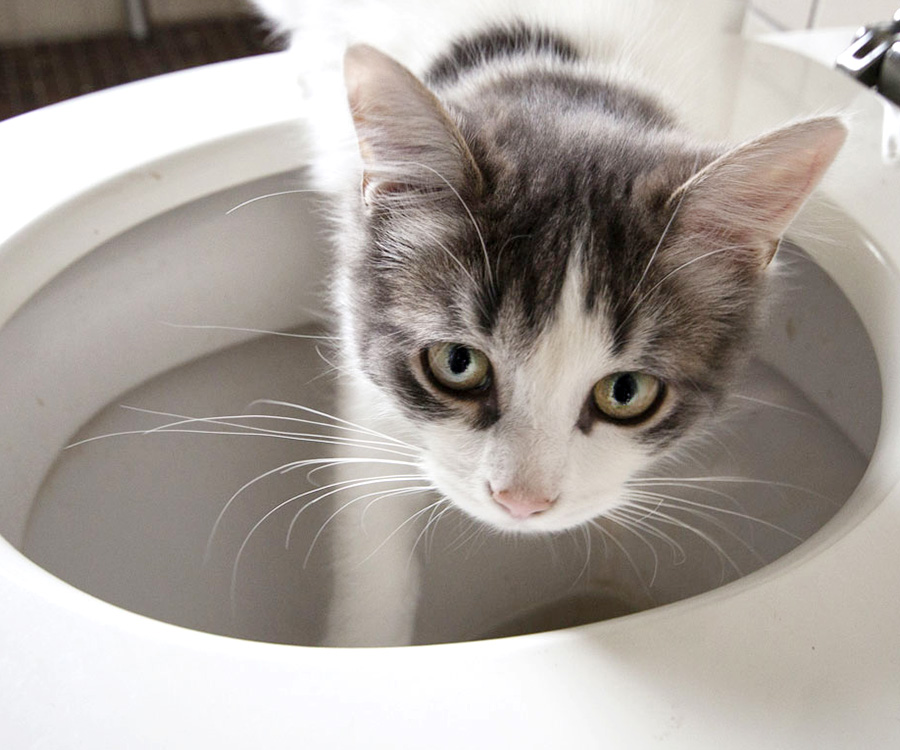Reasons You Shouldn't Flush Cat Poop Down Your Toilet - Preserve Your Pipe Health
Reasons You Shouldn't Flush Cat Poop Down Your Toilet - Preserve Your Pipe Health
Blog Article
How do you feel about How to Dispose of Cat Poop and Litter Without Plastic Bags?

Introduction
As pet cat proprietors, it's vital to bear in mind just how we dispose of our feline friends' waste. While it may appear convenient to purge feline poop down the toilet, this practice can have harmful repercussions for both the setting and human health and wellness.
Alternatives to Flushing
Fortunately, there are more secure and more responsible means to dispose of feline poop. Consider the adhering to options:
1. Scoop and Dispose in Trash
One of the most common technique of dealing with feline poop is to scoop it into a naturally degradable bag and toss it in the garbage. Make certain to make use of a dedicated clutter scoop and get rid of the waste promptly.
2. Usage Biodegradable Litter
Opt for eco-friendly cat litter made from products such as corn or wheat. These clutters are eco-friendly and can be securely taken care of in the garbage.
3. Bury in the Yard
If you have a backyard, consider burying cat waste in a marked location far from veggie gardens and water sources. Make sure to dig deep enough to stop contamination of groundwater.
4. Set Up a Pet Waste Disposal System
Buy a family pet waste disposal system particularly designed for feline waste. These systems utilize enzymes to break down the waste, reducing smell and environmental effect.
Health Risks
Along with ecological worries, flushing pet cat waste can also posture health threats to humans. Pet cat feces may consist of Toxoplasma gondii, a bloodsucker that can trigger toxoplasmosis-- a possibly severe disease, specifically for pregnant women and people with damaged immune systems.
Ecological Impact
Purging cat poop introduces hazardous virus and parasites into the water supply, posturing a significant threat to marine ecological communities. These pollutants can negatively impact aquatic life and concession water top quality.
Final thought
Accountable family pet possession expands past offering food and shelter-- it likewise entails appropriate waste monitoring. By refraining from flushing feline poop down the commode and going with alternative disposal approaches, we can reduce our ecological footprint and protect human health.
Why You Should NEVER Flush Cat Poop (and/or Litter) Down Your Toilet
The Problem with Litter
The main function of litter is to solidify and adhere to your cat’s waste. While this makes litter excellent for collecting cat poop and urine, it’s also the exact property that makes it a nightmare when flushed down the toilet.
Cat litter can and will clog pipes. There is non-clumping litter, but it’s still quite heavy and can build up in pipes. This is true even of supposed “flushable litter.”
The problems only compound when the litter is already clumped into cat waste. Toilet paper is among the more flushable things, and even too much of that will clog a toilet.
The Problem with Cat Poop
Sewers and septic systems are designed with human waste in mind. The microbes that help break down human waste don’t work on cat waste. Additionally, cat poop plays host to the parasite Toxoplasma gondii.
When flushed, this parasite can enter the environment in places it was never meant to, posing a risk to pregnant women, their unborn children, and other people with compromised immune systems. While it might not seem possible, flushing cat poop can indeed introduce this parasite to the public water supply.
These reasons are why, even if you’ve trained your cat to go on the toilet and flush, which is possible, it’s still not a good idea. Also, pregnant women and the immunocompromised shouldn’t change litter, either.
How to Handle Litter
The best way to handle litter is to simply put it in a plastic bag and place it in the trash. Avoiding environmental risks and possible plumbing damage is worth the extra effort.
You can also invest in devices that seal away your cat’s waste in a separate compartment, so you don’t have to change the litter nearly as often. They’re also safer for pet owners because they limit the possibility of Toxoplasma gondii exposure.
Disposing of litter the old-fashioned way will ensure you won’t have to worry about any issues that flushing the waste can potentially cause.
Take Care of Clogged Pipes with Stephens Plumbing, Heating & Air Conditioning
The reasons you should never flush cat poop down your toilet are numerous, but sometimes the inevitable happens despite your best efforts.
Stephens Plumbing, Heating & Air Conditioning is ready to help if you’re experiencing litter-blocked plumbing. Whether you need us in an emergency or want to schedule regular maintenance, we’re here for you.
https://www.stephensplumbing.net/bathroom-plumbing/never-flush-cat-poop-down-your-toilet/

I ran across that piece about How to Dispose of Cat Poop and Litter Without Plastic Bags when looking around the web. Be sure to set aside a second to share this page if you enjoyed reading it. I treasure reading our article about How to Dispose of Cat Poop and Litter Without Plastic Bags.
Call Today Report this page